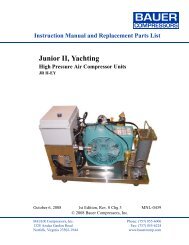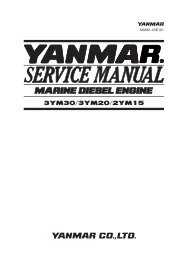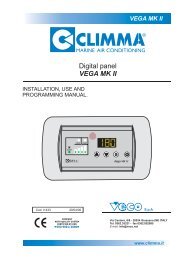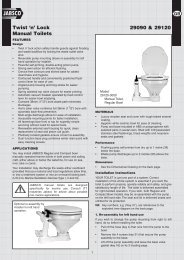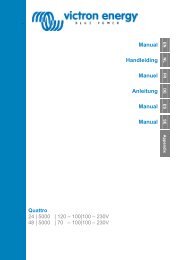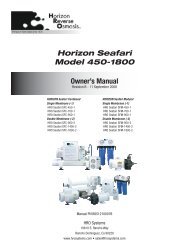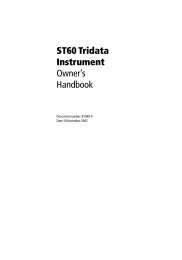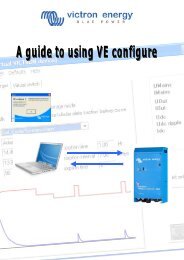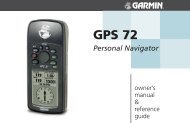Sonnenschein Exide MSDS - Zanshin
Sonnenschein Exide MSDS - Zanshin
Sonnenschein Exide MSDS - Zanshin
Create successful ePaper yourself
Turn your PDF publications into a flip-book with our unique Google optimized e-Paper software.
IV. FIRE AND EXPLOSION HAZARD DATA (CONTINUED)<br />
resistant clothing, gloves, face and eye protection. If batteries are on charge, shut off power to the charging equipment, but, note<br />
that strings of series connected batteries may still pose risk of electric shock even when charging equipment is shut down.<br />
Unusual Fire and Explosion Hazards:<br />
In operation, batteries generate and release flammable hydrogen gas. They must always be assumed to contain this gas which, if<br />
ignited by burning cigarette, naked flame or spark, may cause battery explosion with dispersion of casing fragments and<br />
corrosive liquid electrolyte. Carefully follow manufacturer's instructions for installation and service. Keep away all sources of<br />
gas ignition and do not allow metallic articles to simultaneously contact the negative and positive terminals of a battery.<br />
V. REACTIVITY DATA<br />
Stability: Stable X<br />
Unstable<br />
Conditions to Avoid: Prolonged overcharge at high current; sources of ignition.<br />
Incompatibility: (materials to avoid)<br />
Electrolyte (Water and Sulfuric Acid Solution): Contact with combustibles and organic materials may cause fire and explosion.<br />
Also reacts violently with strong reducing agents, metals, sulfur trioxide gas, strong oxidizers, and water. Contact with metals<br />
may produce toxic sulfur dioxide fumes and may release flammable hydrogen gas.<br />
Lead compounds: Avoid contact with strong acids, bases, halides, halogenates, potassium nitrate, permanganate, peroxides,<br />
nascent hydrogen, and reducing agents.<br />
Hazardous Decomposition Products:<br />
Electrolyte: Sulfur trioxide, carbon monoxide, sulfuric acid mist, sulfur dioxide, hydrogen sulfide.<br />
Lead compounds: Temperatures above the melting point are likely to produce toxic metal fume, vapor, or dust; contact with<br />
strong acid or base or presence of nascent hydrogen may generate highly toxic arsine gas.<br />
VI. HEALTH HAZARD DATA<br />
Routes of Entry:<br />
Electrolyte: Harmful by all routes of entry.<br />
Lead compounds: Hazardous exposure can occur only when product is heated above the melting point, oxidized or otherwise<br />
processed or damaged to create dust, vapor, or fume.<br />
Inhalation:<br />
Electrolyte: Breathing of sulfuric acid vapors or mists may cause severe respiratory irritation.<br />
Lead compounds: Inhalation of lead dust or fumes may cause irritation of upper respiratory tract and lungs.<br />
Ingestion:<br />
Electrolyte: May cause severe irritation of mouth, throat, esophagus, and stomach.<br />
Lead compounds: Acute ingestion may cause abdominal pain, nausea, vomiting, diarrhea, and severe cramping. This may lead<br />
rapidly to systemic toxicity.<br />
Skin Contact:<br />
Electrolyte: Severe irritation, burns, and ulceration.<br />
Lead compounds: Not absorbed through the skin.<br />
Eye Contact:<br />
Electrolyte: Severe irritation, burns, cornea damage, blindness.<br />
Lead compounds: May cause eye irritation.<br />
Effects of Overexposure - Acute:<br />
Electrolyte: Severe skin irritation, damage to cornea may cause blindness, upper respiratory irritation.<br />
Lead compounds: Symptoms of toxicity include headache, fatigue, abdominal pain, loss of appetite, muscular aches and<br />
weakness, sleep disturbances, and irritability.<br />
Page 2 of 5





